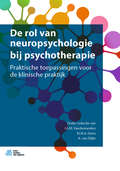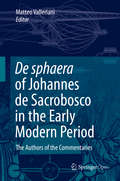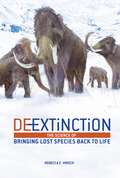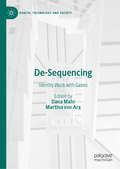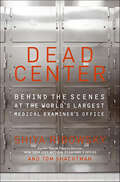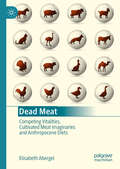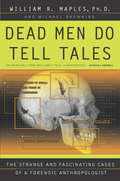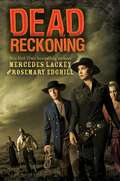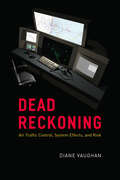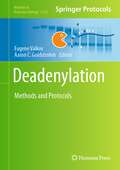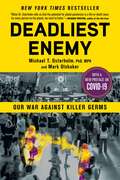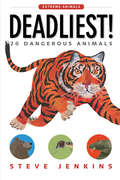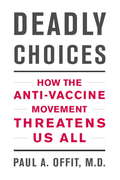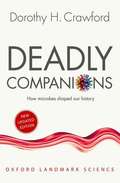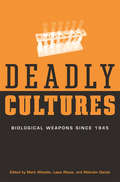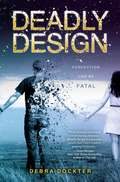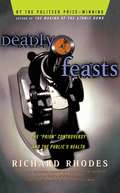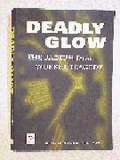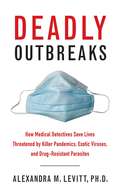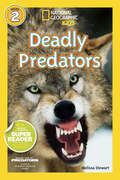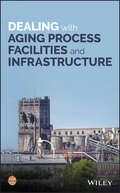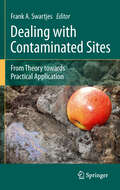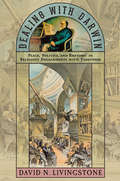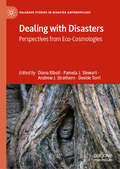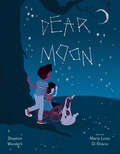- Table View
- List View
De rol van neuropsychologie bij psychotherapie: Praktische toepassingen voor de klinische praktijk
by J.A.M. Vandermeulen M.M.A. Derix A. Van DijkeDit boek laat zien hoe neuropsychologische problematiek kan interfereren bij psychotherapeutische behandeling. Door hier meer op te focussen, kun je effectiever behandelen en misdiagnostiek voorkomen. Het beschrijft welke problemen je kan tegenkomen bij de behandeling, en welke kennis van neuropsychologische stoornissen nodig is bij aanvang en tijdens de behandeling. Tevens biedt het boek praktische handvatten voor de behandeling in de klinische praktijk. De rol van neuropsychologie in de psychotherapie is opgebouwd uit drie delen. Het algemene gedeelte gaat over de relatie tussen psychotherapie en neurowetenschappen, over kwetsbaarheid en veerkracht en over ontwikkelingsneuropsychologische perspectieven. In het tweede praktijkgericht deel komen de meest voorkomende psychische en psychiatrische problemen aan de orde, zoals depressie, chronische vermoeidheid, posttraumatisch stressstoornissen, ADHD en somatische symptoomstoornissen. Ook leest u over de mogelijke inzet van E-health bij de behandeling van deze patiënten. Deel drie, het tweede praktijkgerichte deel, richt zich op de gevolgen van niet aangeboren hersenletsel (NAH), zoals de identiteit na een NAH, beperkte cognitieve stoornissen, emotionele problemen en gesprekstherapie na hersenletsel. Daarnaast komt ook de mogelijke inzet van E-health bij behandeling van NAH aan de orde. Het boek richt zich op psychologen, psychotherapeuten en psychiaters werkzaam in de ggz. Het boek is eveneens goed bruikbaar binnen de diverse ggz-opleidingen.
De sphaera of Johannes de Sacrobosco in the Early Modern Period: The Authors of the Commentaries
by Matteo VallerianiThis open access book explores commentaries on an influential text of pre-Copernican astronomy in Europe. It features essays that take a close look at key intellectuals and how they engaged with the main ideas of this qualitative introduction to geocentric cosmology. Johannes de Sacrobosco compiled his Tractatus de sphaera during the thirteenth century in the frame of his teaching activities at the then recently founded University of Paris. It soon became a mandatory text all over Europe. As a result, a tradition of commentaries to the text was soon established and flourished until the second half of the 17th century. Here, readers will find an informative overview of these commentaries complete with a rich context. The essays explore the educational and social backgrounds of the writers. They also detail how their careers developed after the publication of their commentaries, the institutions and patrons they were affiliated with, what their agenda was, and whether and how they actually accomplished it. The editor of this collection considers these scientific commentaries as genuine scientific works. The contributors investigate them here not only in reference to the work on which it comments but also, and especially, as independent scientific contributions that are socially, institutionally, and intellectually contextualized around their authors.
De-Extinction: The Science of Bringing Lost Species Back to Life
by Rebecca E. HirschIn the twenty-first century, because of climate change and other human activities, many animal species have become extinct, and many others are at risk of extinction. Once they are gone, we cannot bring them back—or can we? With techniques such as cloning, scientists want to reverse extinction and return lost species to the wild. Some scientists want to create clones of recently extinct animals, while others want to make new hybrid animals. Many people are opposed to de-extinction. Some critics say that the work diverts attention from efforts to save species that are endangered. Others say that de-extinction amounts to scientists "playing God." Explore the pros and cons of de-extinction and the cutting-edge science that makes it possible.
De-Sequencing: Identity Work with Genes (Health, Technology and Society)
by Dana Mahr Martina Von ArxAre you your genes? De-Sequencing: Identity Work with Genes explores this perplexing question, showing how different forms of knowledge must be contextualized to become meaningful. It is generally assumed that the genomic sequence adds up to the identity-forming material life is made of. Yet identity cannot itself adopt the form of a sequence. As the authors in this volume show, the genome must be ‘de-sequenced’ by human language to render it interpretable and meaningful in a social context. The book unpacks this type of ‘sequence-speech’ in engaging detail, adopting a personal, social, cultural, and bio-political approach to examine the transformation of human identity and reflexivity in the era of genetic citizenship.
Dead Center: Behind the Scenes at the World's Largest Medical Examiner's Office
by Shiya Ribowsky Tom ShachtmanThis insider’s account of the NYC medical examiner’s office takes readers from an average day in the autopsy room to the tragic aftermath of 9/11.For fifteen years, Shiya Ribowsky worked as a medicolegal investigator in New York City’s medical examiner’s office—the largest, most sophisticated organization of its kind in the world. Ribowsky led the investigations of more than eight thousand individual deaths, becoming a key figure in some of New York’s most bizarre death cases. He also took charge of the largest forensic investigation ever attempted: identifying the dead in the aftermath of September 11th.Now Ribowsky pulls back the curtain on the New York City’s medical examiner’s office, giving a never-before-seen glimpse into death and the city. From vermin-infested Bowery flophouses to posh Upper East Side apartments of the city’s dead, Ribowsky explores the skeletons that hang in the Big Apple’s closets. Combing through the autopsy room, he also exposes the grim secrets that only a scalpel can reveal, and explains how forensic investigation not only solve crimes—but also saves lives.
Dead Meat: Competing Vitalities, Cultivated Meat Imaginaries and Anthropocene Diets
by Elisabeth AbergelAs we confront the environmental challenges of the Anthropocene, cellular agriculture has emerged as a revolutionary technology promising to reshape global food systems. Dead Meat offers a critical examination of this biotechnological shift, exploring how cultivated meat production reconfigures the relationship between life, death, and food in the context of competing ecological, social, and ethical imperatives. Elisabeth Abergel provides a compelling analysis of cultivated meat through the lens of “competing vitalities”, questioning how these new forms of food production are narrated and imagined in the Anthropocene. She delves into the sociotechnical imaginaries that promise sustainability, animal welfare, and climate resilience, while probing the tensions between these narratives and the political economy of industrial food production. Drawing on interdisciplinary perspectives from the environmental humanities, science and technology studies, political economy, and political ecology, Abergel critiques the idea that cultivated meat is a simple technological fix to the climate crisis. Instead, she exposes how these innovations both challenge and reinforce capitalist logics that dominate agricultural systems. Dead Meat is essential reading for scholars and students in environmental sociology, food politics, science and technology studies, environmental humanities, and political economy, as well as for activists and policymakers interested in sustainable food futures and planetary health.
Dead Men Do Tell Tales: The Strange and Fascinating Cases of a Forensic Anthropologist
by William R. Maples Michael BrowningFrom a skeleton, a skull, a mere fragment of burnt thighbone, Dr. William Maples can deduce the age, gender, and ethnicity of a murder victim, the manner in which the person was dispatched, and, ultimately, the identity of the killer. In Dead Men Do Tell Tales, Dr. Maples revisits his strangest, most interesting, and most horrific investigations, from the baffling cases of conquistador Francisco Pizarro and Vietnam MIAs to the mysterious deaths of President Zachary Taylor and the family of Czar Nicholas II.From the Trade Paperback edition.
Dead Reckoning
by Rosemary Edghill Mercedes LackeyJett is a girl disguised as a boy, living as a gambler in the old West as she searches for her long-lost brother. Honoria Gibbons is a smart, self-sufficient young woman who also happens to be a fabulous inventor. Both young women travel the prairie alone - until they are brought together by a zombie invasion! As Jett and Honoria investigate, they soon learn that these zombies aren't rising from the dead of their own accord ... but who would want an undead army? And why? This gunslinging, hair-raising, zombie western mashup is perfect for fans ofCowboys vs. Aliens and Pride & Prejudice & Zombies.
Dead Reckoning: Air Traffic Control, System Effects, and Risk
by Diane VaughanVaughan unveils the complicated and high-pressure world of air traffic controllers as they navigate technology and political and public climates, and shows how they keep the skies so safe. When two airplanes were flown into the World Trade Center towers on September 11, 2001, Americans watched in uncomprehending shock as first responders struggled to react to the situation on the ground. Congruently, another remarkable and heroic feat was taking place in the air: more than six hundred and fifty air traffic control facilities across the country coordinated their efforts to ground four thousand flights in just two hours—an achievement all the more impressive considering the unprecedented nature of the task. In Dead Reckoning, Diane Vaughan explores the complex work of air traffic controllers, work that is built upon a close relationship between human organizational systems and technology and is remarkably safe given the high level of risk. Vaughan observed the distinct skill sets of air traffic controllers and the ways their workplaces changed to adapt to technological developments and public and political pressures. She chronicles the ways these forces affected their jobs, from their relationships with one another and the layouts of their workspace to their understanding of their job and its place in society. The result is a nuanced and engaging look at an essential role that demands great coordination, collaboration, and focus—a role that technology will likely never be able to replace. Even as the book conveys warnings about complex systems and the liabilities of technological and organizational innovation, it shows the kinds of problem-solving solutions that evolved over time and the importance of people.
Deadenylation: Methods and Protocols (Methods in Molecular Biology #2723)
by Aaron C. Goldstrohm Eugene ValkovThis volume provides new approaches and technologies into roles of poly(A) metabolism in translation, RNA stability, and quality control of gene expression. Written in the highly successful Methods in Molecular Biology series format, chapters include introductions to their respective topics, lists of the necessary materials and reagents, step-by-step, readily reproducible laboratory protocols, and key tips on troubleshooting and avoiding known pitfalls. Authoritative and cutting-edge, Deadenylation: Methods and Protocols aims to pave the way for future investigations of the complex regulatory networks that control mRNA stability and expression.
Deadliest Enemy: Our War Against Killer Germs
by Mark Olshaker Michael OsterholmWe are facing an overwhelming army of deadly, invisible enemies. We need a plan -- before it's too late.Unlike natural disasters, whose destruction is concentrated in a limited area over a period of days, and illnesses, which have devastating effects but are limited to individuals and their families, infectious disease has the terrifying power to disrupt everyday life on a global scale, overwhelming public and private resources and bringing trade and transportation to a grinding halt. In today's world, it's easier than ever to move people, animals, and materials around the planet, but the same advances that make modern infrastructure so efficient have made epidemics and even pandemics nearly inevitable. And as outbreaks of Ebola, MERS, yellow fever, and Zika have demonstrated, we are woefully underprepared to deal with the fallout. So what can -- and must -- we do in order to protect ourselves from mankind's deadliest enemy? <P><P>Drawing on the latest medical science, case studies, policy research, and hard-earned epidemiological lessons, Deadliest Enemy explores the resources and programs we need to develop if we are to keep ourselves safe from infectious disease. The authors show how we could wake up to a reality in which many antibiotics no longer cure, bioterror is a certainty, and the threat of a disastrous influenza pandemic looms ever larger. Only by understanding the challenges we face can we prevent the unthinkable from becoming the inevitable. <P><P>Deadliest Enemy is high scientific drama, a chronicle of medical mystery and discovery, a reality check, and a practical plan of action. <P><P><b>A New York Times Bestseller</b>
Deadliest!: 20 Dangerous Animals (Extreme Animals)
by Steve JenkinsWhat do a cape buffalo, a king cobra, and a puffer fish have in common? They're all deadly! Deadliest! showcases some of the planet’s most threatening creatures. Steve Jenkins's Extreme Animals reader series explores nature's truly superlative animals with the help of illustrations, infographics, facts, and figures while detailing the astounding abilities of critters as small as a frog or as big as a whale. Each installment focuses on truly amazing and unusual animals, making these nonfiction readers accessible, informative, and fascinating.
Deadly Choices: How the Anti-vaccine Movement Threatens Us All
by Paul A. OffitThere's a silent, dangerous war going on out there. On one side are parents, bombarded with stories about the dangers of vaccines, now wary of immunizing their sons and daughters. On the other side are doctors, scared to send kids out of their offices vulnerable to illnesses like whooping cough and measles--the diseases of their grandparents.How did anyone come to view vaccines with horror? The answer is rooted in one of the most powerful citizen activist movements in our nation's history. In Deadly Choices, infectious disease expert Paul Offit relates the shocking story of anti-vaccine America--its origins, leaders, influences, and impact. Offering strategies to keep us from returning to an era when children routinely died from infections, Deadly Choices is a vigorous and definitive rebuttal of the powerful anti-vaccine movement.
Deadly Companions: How Microbes Shaped Our History
by Dorothy H. CrawfordBeginning with a dramatic account of the SARS pandemic at the start of the 21st century, she takes us back in time to follow the interlinked history of microbes and man, taking an up-to-date look at ancient plagues and epidemics, and identifying key changes in the way humans have lived - such as our move from hunter-gatherer to farmer to city-dweller - which made us vulnerable to microbe attack.
Deadly Cultures: Biological Weapons since 1945
by Lajos RózsaThe threat of biological weapons has never attracted as much public attention as in the past five years. Current concerns largely relate to the threat of weapons acquisition and use by rogue states or by terrorists. But the threat has deeper roots—it has been evident for fifty years that biological agents could be used to cause mass casualties and large-scale economic damage. Yet there has been little historical analysis of such weapons over the past half-century. Deadly Cultures sets out to fill this gap by analyzing the historical developments since 1945 and addressing three central issues: Why have states continued or begun programs for acquiring biological weapons? Why have states terminated biological weapons programs? How have states demonstrated that they have truly terminated their biological weapons programs? We now live in a world in which the basic knowledge needed to develop biological weapons is more widely available than ever before. Deadly Cultures provides the lessons from history that we urgently need in order to strengthen the long-standing prohibition of biological weapons.
Deadly Design
by Debra DockterThe emotional power of If I Stay meets the survival story of Maze Runner Genetically engineered identical twins Kyle and Connor McAdams were born two years apart. Their parents figured it was safer that way, to increase their odds of survival. Connor was born first, paving an impossibly perfect path for Kyle to follow. He was the best at everything--valedictorian, star quarterback etc. Kyle never thought he'd be able to live up, so he didn't even try. But when Connor, 18, suddenly drops dead of a heart attack, and Kyle learns of other genetically modified kids who've also died on their eighteenth birthdays, he's suddenly motivated--to save his own life. Like Connor and all the rest, Kyle was conceived at the Genesis Innovations Laboratory, where the mysterious Dr. Mueller conducted experiments on them. The clock's ticking as Kyle searches for answers: who was Dr. Mueller really, and what did he do to cause their hearts to stop at eighteen? He must unravel the clues quickly, before, he too, becomes another perfect, blue-eyed corpse.
Deadly Feasts: Tracking the Secrets of a Terrifying New Plague
by Richard RhodesRichard Rhodes follows virus hunters on three continents as they track the emergence of a deadly new brain disease that first kills cannibals in New Guinea, then cattle and young people in Britain and France -- and that has already been traced to food animals in the United States. In a new Afterword for the paperback, Rhodes reports the latest U. S. and worldwide developments of a burgeoning global threat.
Deadly Glow: The Radium Dial Worker Tragedy
by Ross MullnerDeadly Glow: The Radium Dial Worker Tragedy
Deadly Outbreaks: How Medical Detectives Save Lives Threatened by Killer Pandemics, Exotic Viruses, and Drug-Resistant Parasites
by Alexandra LevittDespite advances in health care, infectious microbes continue to be a formidable adversary to scientists and doctors. Vaccines and antibiotics, the mainstays of modern medicine, have not been able to conquer infectious microbes because of their amazing ability to adapt, evolve, and spread to new places. Terrorism aside, one of the greatest dangers from infectious disease we face today is from a massive outbreak of drug-resistant microbes.Deadly Outbreaks recounts the scientific adventures of a special group of intrepid individuals who investigate these outbreaks around the world and figure out how to stop them. Part homicide detective, part physician, these medical investigators must view the problem from every angle, exhausting every possible source of contamination. Any data gathered in the field must be stripped of human sorrows and carefully analyzed into hard statistics.Author Dr. Alexandra Levitt is an expert on emerging diseases and other public health threats. Here she shares insider accounts she's collected that go behind the alarming headlines we've seen in the media: mysterious food poisonings, unexplained deaths at a children's hospital, a strange neurologic disease afflicting slaughterhouse workers, flocks of birds dropping dead out of the sky, and drug-resistant malaria running rampant in a refugee camp. Meet the resourceful investigators--doctors, veterinarians, and research scientists--and discover the truth behind these cases and more.
Deadly Predators (Readers)
by Melissa StewartCome face-to-face with sharks, wolves, tigers, and many more predators in this gripping new addition to the National Geographic Kids Reader series. Amazing animal photos will wow kids as they discover how predators hunt, raise their young, and contribute to the food chain. This Level 2 reader is written in easy-to-grasp text and will help kids understand who rules in the wild!
Dealing with Aging Process Facilities and Infrastructure
by CcpsExamines the concept of aging process facilities and infrastructure in high hazard industries and highlights options for dealing with the problem while addressing safety issues This book explores the many ways in which process facilities, equipment, and infrastructure might deteriorate upon continuous exposure to operating and climatic conditions. It covers the functional and physical failure modes for various categories of equipment and discusses the many warning signs of deterioration. Dealing with Aging Process Facilities and Infrastructure also explains how to deal with equipment that may not be safe to operate. The book describes a risk-based strategy in which plant leaders and supervisors can make more informed decisions on aging situations and then communicate them to upper management effectively. Additionally, it discusses the dismantling and safe removal of facilities that are approaching their intended lifecycle or have passed it altogether. Filled with numerous case studies featuring photographs to illustrate the positive and negative experiences of others who have dealt with aging facilities, Dealing with Aging Process Facilities and Infrastructure covers the causes of equipment failures due to aging and their consequences; plant management commitment and responsibility; inspection and maintenance practices for managing life cycle; specific aging asset integrity management practices; and more. Describes symptoms and causal mechanisms of aging in various categories of process equipment Presents key considerations for making informed risk-based decisions regarding the repair or replacement of aging process facilities and infrastructure Discusses practices for managing process facility and infrastructure life cycle Includes examples and case histories of failures related to aging Dealing with Aging Process Facilities and Infrastructure is an important book for industrial practitioners who are often faced with the challenge of managing process facilities and infrastructure as they approach the end of their useful lifecycle.
Dealing with Contaminated Sites
by Frank A. SwartjesThis standard work on contaminated site management covers the whole chain of steps involved in dealing with contaminated sites, from site investigation to remediation. An important focus throughout the book is on Risk Assessment. In addition, the book includes chapters on characterisation of natural and urban soils, bioavailability, natural attenuation, policy and stakeholder viewpoints and Brownfields. Typically, the book includes in-depth theories on soil contamination, along with offering possibilities for practical applications. More than sixty of the world's top experts from Europe, the USA, Australia and Canada have contributed to this book. The twenty-five chapters in this book offer relevant information for experienced scientists, students, consultants and regulators, as well as for 'new players' in contaminated site management
Dealing with Darwin: Place, Politics, and Rhetoric in Religious Engagements with Evolution (Medicine, Science, and Religion in Historical Context)
by David N. LivingstoneHow was Darwin’s work discussed and debated among the same religious denomination in different locations?Using place, politics, and rhetoric as analytical tools, historical geographer David N. Livingstone investigates how religious communities sharing a Scots Presbyterian heritage engaged with Darwin and Darwinism at the turn of the twentieth century. His findings, presented as the prestigious Gifford Lectures, transform our understandings of the relationship between science and religion.The particulars of place—whether in Edinburgh, Belfast, Toronto, Princeton, or Columbia, South Carolina—shaped the response to Darwin’s theories. Were they tolerated, repudiated, or welcomed? Livingstone shows how Darwin was read in different ways, with meaning distilled from Darwin's texts depending on readers' own histories—their literary genealogies and cultural preoccupations. That the theory of evolution fared differently in different places, Livingstone writes, is "exactly what Darwin might have predicted. As the theory diffused, it diverged." Dealing with Darwin shows the profound extent to which theological debates about evolution were rooted in such matters as anxieties over control of education, the politics of race relations, the nature of local scientific traditions, and challenges to traditional cultural identity. In some settings, conciliation with the new theory, even endorsement, was possible—demonstrating that attending to the specific nature of individual communities subverts an inclination to assume a single relationship between science and religion in general, evolution and Christianity in particular. Livingstone concludes with contemporary examples to remind us that what scientists can say and what others can hear in different venues differ today just as much as they did in the past.
Dealing with Disasters: Perspectives from Eco-Cosmologies (Palgrave Studies in Disaster Anthropology)
by Pamela J. Stewart Andrew J. Strathern Davide Torri Diana RiboliProviding a fresh look at some of the pressing issues of our world today, this collection focuses on experiential and ritualized coping practices in response to a multitude of environmental challenges—cyclones, volcanic eruptions, tsunamis, earthquakes, warfare and displacements of peoples and environmental resource exploitation. Eco-cosmological practices conducted by skilled healing practitioners utilize knowledge embedded in the cosmological grounding of place and experiences of place and the landscapes in which such experience is encapsulated. A range of geographic case studies are presented in this volume, exploring Asia, Europe, the Pacific, and South America. With special reference throughout to ritual as a mode of seeking the stabilization, renewal, and continuity of life processes, this volume will be of particular interest to readers working in shamanic and healing practices, environmental concerns surrounding sustainability and conservation, ethnomedical systems, and religious and ritual studies.
Dear Moon
by Stephen WunderliIn this poignant story of grief and healing, Max learns that time will keep ticking and loss is inevitable, but memories last forever.
